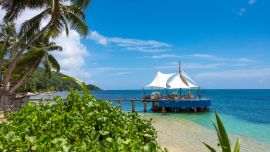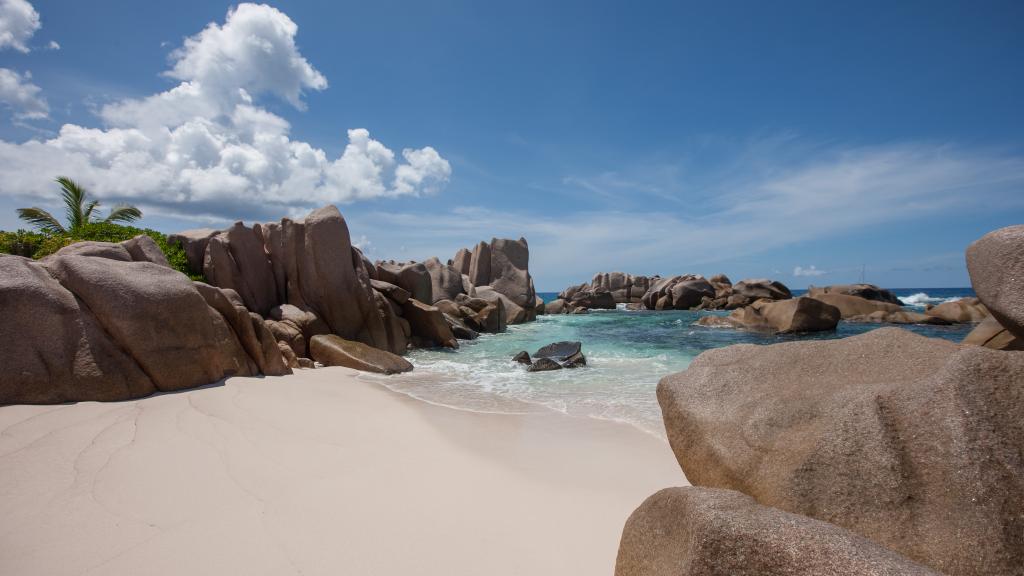
Anse Marron · La Digue
Difficulty: advanced
The hike to Anse Marron is certainly one of the most adventurous tours on La Digue. The path leads through the wild south of the island, where there are no roads or signposted paths. The destination is the wonderful Anse Marron, an impressive, isolated beach, which is divided into two distinct sections. One is wild with large waves, while the other consists of natural pools, protected from the open ocean by granite boulders. That said, the hike is also the aim here, with it being a fantastic way of discovering the flora and fauna of the Seychelles. Please note that it is highly inadvisable to attempt the hike without a Seychellois tour guide, as the path can be dangerous. Your guide will also tell you much about the history and nature of the island, making it even more worthwhile.
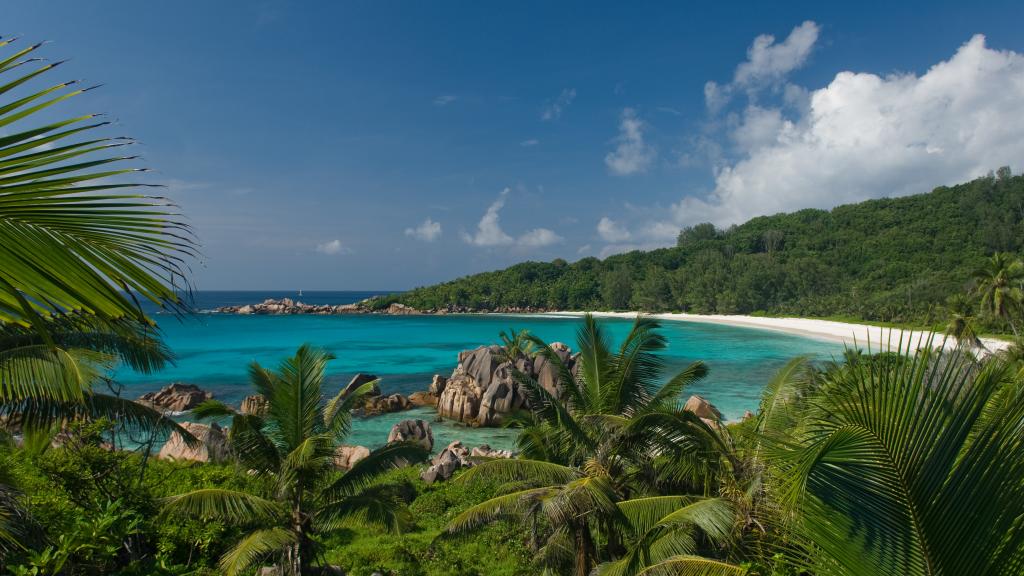
Grand Anse, Petite Anse & Anse Cocos · La Digue
Difficulty: medium
Each of these three beaches on the eastern coast of La Digue merits its own day trip, so beautiful are all three of them. That having been said, the three beaches can all easily be visited on a singular hike, starting with Grand Anse, followed by Petite Anse, and finally Anse Cocos. Take your bike to the wild Grand Anse, from where you'll have to walk to the other two. It takes about 15 minutes to get to Petite Anse from its neighbour. Looking out to see, the path is towards the left of the beach until you reach a pool, then leads up over boulders to Petite Anse. Those who want to go even further, to Anse Cocos, must go along the path on the left, with the journey taking about 20 to 25 minutes. All three of the beaches do not have an offshore reef, so you should be careful at all times, particularly between May and October. However, on Anse Cocos there are some small natural pools which are protected all year-round by boulders, and it is safe to swim here.
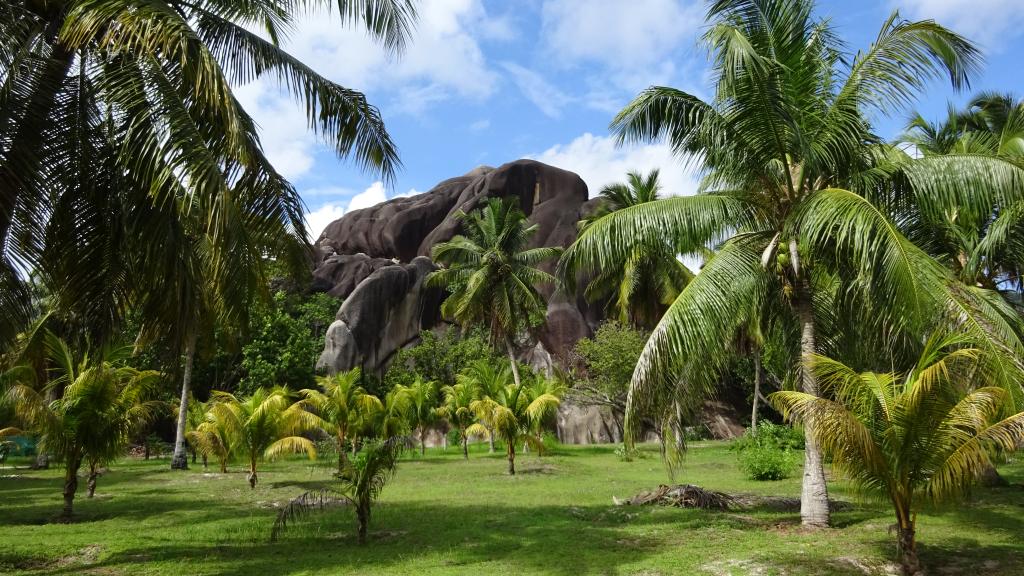
L'Union Estate & Anse Source d'Argent · La Digue
Difficulty: easy
The beautiful Union Estate park in the west of La Digue is best-discovered on-foot, even though many people simply pass through on bike on the way to Anse Source d'Argent. That is really a shame, as there is much to discover in the park. Visitors to the Union Estate can enjoy numerous glimpses into the colonial history of the Seychelles unlike anywhere else on the island. Right at the entrance to the park is the oldest cemetery on La Digue, where the first settlers to the island are laid to rest. Besides an old coconut and vanilla plantation, an old plantation house, a 700-million-year-old, environmentally-protected monolith, and numerous giant tortoises, visitors can observe how coconut oil is extracted with the help of an ox. The park's shops also offer numerous small souvenirs for you to buy, including coconut oil, vanilla, cinnamon, nutmeg, coconut products, and much more. The path through the park winds its way eventually to Anse Source d'Argent. This incredible beach possesses a labyrinth of granite boulders and is not just one of the most beautiful beaches in the Seychelles, but ranks highly worldwide, and has won several titles to that effect. The entrance fee to the park is 150 Seychelles rupees.
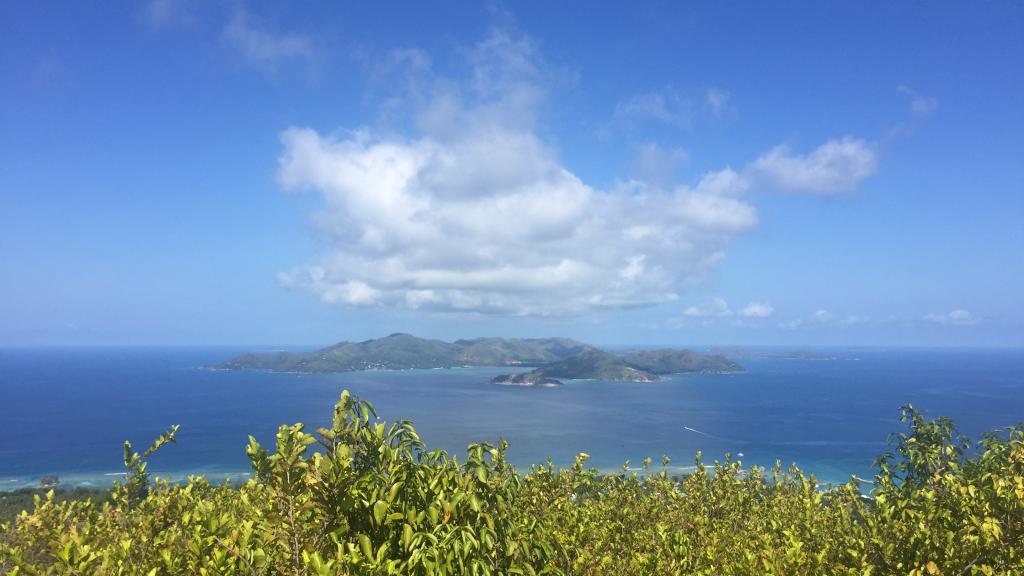
Nid d'Aigle · La Digue
Difficulty: advanced
The adventurous among you should consider the climb up to the Nid d'Aigle during your stay on La Digue. This 333-metre 'mountain' (1092 ft) is the highest peak on La Digue, and is also known as the Eagle's Nest. That said, almost everyone can enjoy the view from the heights of La Digue, as the Belle Vue restaurant awaits just over halfway up the climb, with its three-course menu in the evening and an incredible view of the sunset over Praslin. The evening meal price includes a taxi fare up and down the mountain (reservation required). However, the path to the restaurant can also be taken on-foot, although this is the sweatiest option, as the path itself is not to be underestimated. For those who want a cooler option, you can take your own taxi from La Passe. From the restaurant, you can then proceed further to reach the peak. The path winds through soft forest floors, granite boulders, and red earth. Gradually, the jungle thins out, reaching a ridge, which you must climb for the final few metres. The highest point offers an incredible view of Praslin, Félicité, and Marianne, and when it's clear you can even see over to Frégate. Once you've arrived at the top, take a moment to get your bearings, and do not try to climb down through any thick undergrowth. The best way down is, in fact, the same way that you came up, especially if you want to be sure that you won't encounter any problems. In general, you should also make sure to bring enough water (at least 2 litres), and sturdy shoes are a must.
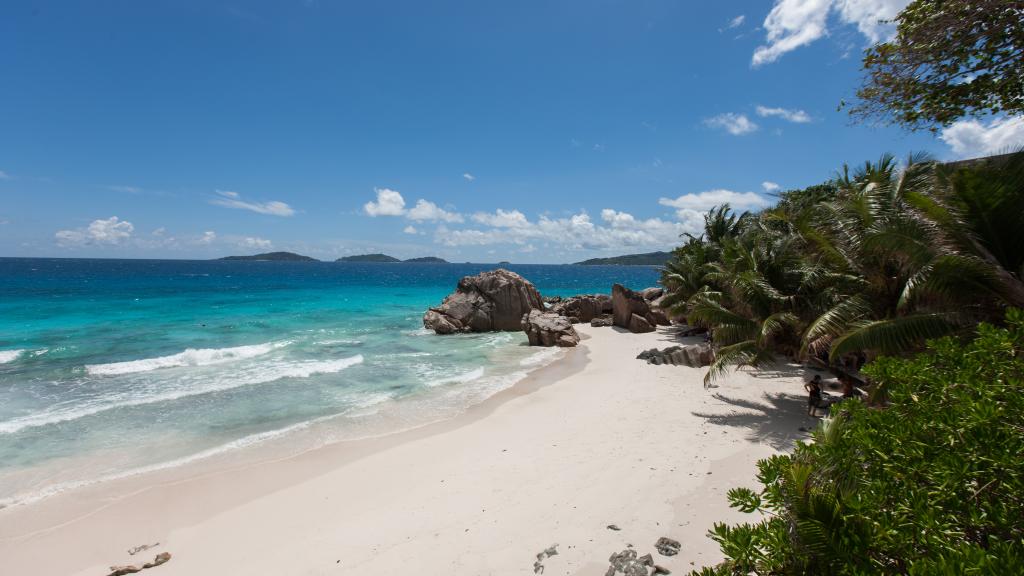
The wild North · La Digue
Difficulty: easy
The wild north of the island is one of the most beautiful regions on La Digue. With highlights of peace, relaxation, nature, and little in terms of touristic disruption, the few accommodations that line the coast here are worth consideration, including the Patatran Hotel, just past Anse Severe on the cliff edge. The region also contains other beautiful, wild beaches where you will barely see another soul. From the harbour, take your bike towards the north, or set off on foot. The second option takes more time, but La Digue was made for taking it slowly. You will need about an hour on-foot to complete the approximately 4.6-kilometre (3 miles) street to Anse Fourmis, assuming you don't stop along the way at one of the numerous juice bars which provide necessary refreshment. The most famous of these is called Chez Jules at Anse Banane, which doesn't just provide the best juice on the island, but also delicious octopus curry and fish dishes.
